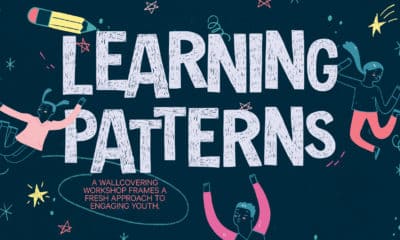Special Reports + Analysis
Sign of the Times
How adapting with consumer trends and international changes can help your retail clients – and your shop – grow.
Published
4 years agoon
FINISH THIS PHRASE: “Retail is _______.” Did you say “dead?” If you did, you aren’t alone. Begin typing “retail is” in Google and the first two search options are “dead” and “dying.” But scroll a little further and you’ll see the word “changing.” Consider a new notion: “Retail is evolving.” The industry has undergone major shifts with the rise of ecommerce and the “Amazon effect.” Customers tend to know what they want at point of purchase instead of deciding as they browse through store aisles. And the current COVID-19 pandemic has forced those uncertain about online shopping to adapt. So, how can you use this information to elevate your business in the retail industry?
In order to gain better insight, we interviewed two industry experts, Carol Spieckerman and Kevin Foster O’Donnell.
 Carol Spieckerman is consistently named a top retail influencer and a recognized authority on retail and brand strategy. As president of Spieckerman Retail, she helps diverse retail stakeholders define market messaging, increase retail thought leadership, and accelerate B2B development. She speaks around the world on her latest Retail Trajectories: calls to action that transcend trend across categories, channels, business models, and touch points. Spieckerman is a regular contributor to leading retail and business media outlets across a broad spectrum of retail topics and trends.
Carol Spieckerman is consistently named a top retail influencer and a recognized authority on retail and brand strategy. As president of Spieckerman Retail, she helps diverse retail stakeholders define market messaging, increase retail thought leadership, and accelerate B2B development. She speaks around the world on her latest Retail Trajectories: calls to action that transcend trend across categories, channels, business models, and touch points. Spieckerman is a regular contributor to leading retail and business media outlets across a broad spectrum of retail topics and trends.
 Kevin Foster O’Donnell champions cutting edge design, carefully integrated architecture and environments, inventive conceptual approaches, creative brand development, insightful business strategy, and innovative and sustainable use of materials. He’s an expert at expressing a design concept in a way that inspires production. At Thread Collaborative, he places special emphasis on crafting fully branded retail environments, taking everything from large-scale graphics to furniture to menus into consideration. He’s personally committed to the execution of the design, working closely with fabricators to ensure design fidelity and the highest possible quality of craftsmanship. He directs a wide range of design services, most notably architecture, design development, selection of finishes, construction drawings, branding, graphic design, fixture planning, millwork design, and furniture design. His client list includes Whole Foods Market, PK Market, The Kroger Co., Tesco’s Fresh & Easy Neighborhood Market, Harris Teeter, Supervalu, Wegmans, Good Earth Natural Foods, and New Leaf Community Markets.
Kevin Foster O’Donnell champions cutting edge design, carefully integrated architecture and environments, inventive conceptual approaches, creative brand development, insightful business strategy, and innovative and sustainable use of materials. He’s an expert at expressing a design concept in a way that inspires production. At Thread Collaborative, he places special emphasis on crafting fully branded retail environments, taking everything from large-scale graphics to furniture to menus into consideration. He’s personally committed to the execution of the design, working closely with fabricators to ensure design fidelity and the highest possible quality of craftsmanship. He directs a wide range of design services, most notably architecture, design development, selection of finishes, construction drawings, branding, graphic design, fixture planning, millwork design, and furniture design. His client list includes Whole Foods Market, PK Market, The Kroger Co., Tesco’s Fresh & Easy Neighborhood Market, Harris Teeter, Supervalu, Wegmans, Good Earth Natural Foods, and New Leaf Community Markets.
What is your take on the concept that retail is not dead, but evolving?
CS This is an absolute truth. The death of retail has been predicted many times over the years, and retail has been mightily tested before, but the reality is that retail is not and will not be dead; it will be different.
AdvertisementKFO I don’t think retail is dead, or dying. It is, as always, evolving. Brick and mortar retail continues to be relevant to consumers, and should continue to be after COVID-19. Maybe someday we’ll do all of our shopping online, or through other means, but I don’t think that’ll be tomorrow. Physical stores have a significant advantage; they’re excellent venues for memorable shared experiences and customer-centric storytelling. Current online shopping cannot rival this.
PSPs who have clients that are deemed essential (Kroger, Home Depot, etc.) are able to print things like floor signage reminding customers to practice social distancing and outdoor signage alerting customers to stay in their cars and call in their orders, while others who focus on high-end retail are losing their print work for brick and mortar stores that are now closed. Can you share any retail/P-O-P markets PSPs can currently target in order to stay in business and/or gain new business?
CS Retailers that focus on discretionary categories like apparel, home, and high-end products are definitely feeling pain right now. For the near term, that will trickle down to the businesses that support these categories. In the brick and mortar space, retailers have leveraged grocery to drive more frequent trips, which, in turn, benefits non-essential categories – as customers shop for snacks, a sweater or a set of sheets might end up in the cart. Now, the massive and unanticipated shift to online shopping has drawn glaring attention to the digital disconnect between grocery and discretionary categories. These businesses are often siloed online, which further compromises retailers’ ability to sell non-essentials. Mandated bans on sales of nonessential categories in some markets exacerbate the downturn. The good news is there will be pent-up demand on the other side of the pandemic. Even though it will take time for the economy to fully recover, consumers will be out and about, seeking diversion and a bit of reward for hunkering down. At the same time, retailers and brands will be determined to make up for lost time (and sales). Timing is the big question and it’s important to stay in contact with retailers and brands to determine opportunities. Retailers won’t necessarily be in lock step, and some will be better prepared than others to hit the ground running.
KFO The only retail I’m aware of that hasn’t taken their foot off the gas is grocery. All others seem to be paused. We don’t do a lot of food and beverage, but have colleagues who do, and they’re taking a beating. Right now, knock on wood, none of our projects have gone on hold. I think there are print opportunities. Grocers definitely need the kind of graphics you suggest, but I think there’s also a need for other communication that would be served well with printing. Customers are looking for information from retailers about how to stay safe, or how to shop in these new conditions. That should be communicated by the retailer. Some stores will help customers with bagging, others will not; some allow reusable bags, other do not; some limit the number of customers in the store, others do not; some have hand sanitizer, others do not. It’s really a mixed bag of retailer responses. Retailers should be communicating about these issues, but it seems like confusion or inconsistency is more common. I don’t know of any retailers who are currently printing instructions, directions, information, or other things for store exteriors. I think this is a missed opportunity for them to communicate with customers. My local Whole Foods Market controls customer flow and pace of customer entry, but there’s no external communication about how it works, nor how long it will take to get into the store if there’s a line. And exterior queuing also seems to be a fly by the seat of the pants affair. All of these are places where PSPs may be able to offer options or ideas to retailers.
How should PSPs communicate with their current retail clients during this time?
CS The key is to strike a balance between staying in touch and over-communicating. Be mindful of where your business sits in retailers’ and brands’ overall priorities. Designating a single point of contact makes sense to streamline and track communication more efficiently. Tone is important. I always coach my clients to be “positive and assumptive,” and that makes even more sense now. There’s enough gloom and doom circulating these days, so rather than piling on the pain, take a proactive and future-seeking perspective. Assume better times ahead and work toward them. That alone will set you apart.
AdvertisementTiming is the big question, so it’s important to stay in contact with retailers and brands to determine opportunities. PSPs should not assume all retailers will be working with the same readiness and re-entry timeframes or even that they’re following regional or national guidelines to the letter.
During this relative down time, PSPs can take the opportunity to provide thought leadership relating to best practices and trends, even outside of the print space. In my business, I’ve seen an uptick in pitch-free learning events – companies hosting virtual events that provide value without an “ask.” There’s a real opportunity to forge meaningful and helpful connections at a time when everyone is feeling disconnected. The key word is “helpful.”
KFO This is a really interesting question. For existing clients, I don’t think much has changed for us in terms of communication methods. We’re engaging with our clients with more online meetings, but almost all our work is with remote clients and consultants, so that’s not particularly foreign for us. But our business development efforts are taking a hit. Trying to contact prospective new clients is rather stagnant. The critical thing for both current clients and prospective ones is what value I bring them, at this moment, with the current conditions. Do I have ideas that could help them solve new problems they didn’t have yesterday? I would say the same is true for PSPs.
How important is sustainability in the retail industry?
CS Sustainability should be considered an ongoing and evergreen retail priority. PSPs should take a proactive approach to sustainability rather than waiting for mandates. In general, next-stage sustainability is about reaching further down the supply chain. This is another area where no two retailers or brands will take the same approach or have the same standards. It’s important to stay on top of overarching retail industry sustainability innovations and to balance that with knowledge of individual customer initiatives.
KFO Sustainability was important before COVID-19, and I think it will increase after. I hope it brings into sharper focus the interconnectedness of all things. We don’t operate in a vacuum. Causality is absolute. I would hope that one possible upside is greater awareness of how our decisions have great impact on the world.
AdvertisementWhat are you seeking in a PSP? What types of print applications are you seeing that excite you? What are retailers asking for, in order to stand out?
KFO We do work with printers directly, but it’s infrequent. More often we work with a fabricator responsible for signage and graphics in a retail store, and they source printing services directly, typically through existing relationships. For us, we’re usually looking to print on unusual substrates, so an open mind and eagerness to experiment is something we look for. In our work, we try to blur the line between architecture and communication graphics. Ideally, the customer should not know where one ends and the other begins. To do that, we’re often looking at how architectural materials or finishes become part of an in-store communication strategy. That way, printing is an integral part of the architecture, not something applied separately. Our clients are not asking for specific printing solutions to stand out. Customer-centric storytelling, cinematic customer experiences, and integrated environments are the strategies we use to accomplish that, and printing can play a vital role.
If you could guess (take out that crystal ball) how do you see the pandemic affecting retail in the next year, five years?
CS The pandemic will forever change retail and, in many ways, for the better. But some retailers that are on the brink will not make it through, particularly ones that specialize in discretionary categories like apparel, home, jewelry, and high-end products. Retailers have been obsessed with productivity for a while, whether that means wringing out greater supply chain efficiencies, launching smaller formats, or focusing on comp store sales. The post-pandemic world will take productivity to the next level as some retailers find themselves rebuilding from the ground up. Others will launch new concepts with the pandemic experience indelible in their minds. The general rule will be fewer, more productive stores run by fewer, more productive people. The rush to digital that caught retailers off guard as the pandemic took hold will ease a bit, as shoppers will be anxious to get out and about, however new consumer habits will also be engrained. The digital-forward movement will have permanently accelerated. In addition to productivity, diversification will be critical. This is true for retailers, brands, and solution providers. In general, the retailers that are faring the best right now are those that are diversified in terms of categories, business models, and channels. Brands that operate multiple models (wholesale, owned retail, digital direct-to-consumer, etc.) can shift strategies as market dynamics change.
KFO I suspect there will be substantial changes. Because most of our work is grocery, I’ll touch on a few items we’re already seeing. Online shopping, delivery, and pick-up were already growing and becoming unavoidable issues for our clients, but now it’s absolute. The primary hurdle for customers was unfamiliarity with alternate food purchasing scenarios. But that hurdle evaporated overnight. I recently read an article about a study showing that in crisis, customers abandon brand loyalty. Shortages and empty shelves will force customers to consider both brands and products they never would have before. When conditions return to something that’s closer to normal, some of those shifts are likely to hold. Because most of us are eating at home, even after restaurants reopen, in the short term we’ll be less likely to eagerly eat out. It’s going to take a little time. Many of our clients are already considering changes in their offering that might be driven by either customer demand or regulations. For example, on one project, the client is considering eliminating open hot and cold food bars, or any self-service food cases, unless the product is packaged. For non-food retail, the changes will perhaps be less substantial.
Adrienne Palmer is the editor-in-chief of Big Picture and Screen Printing magazines. She joined Big Picture magazine in 2012 after graduating from Ohio University's E.W. Scripps School of Journalism with a BA in magazine journalism. During her time with Big Picture, she has held the roles of assistant editor, associate editor, and managing editor; she added sister publication Screen Printing magazine to her resume in 2019. She is a 2019 Folio: Top Woman in Media; spearheads Big Picture's annual Women in Wide Format Awards and Best of Wide Format Awards as well as Screen Printing's annual Women in Screen Printing Awards; is on the board of Printing United Alliance's Women in Print Alliance and the U.N.I.T.E. Together diversity and inclusion program; hosts the Screen Saver podcast; and represents the Big Picture and Screen Printing teams at numerous industry events year-round as a speaker, moderator, and panelist.

SPONSORED VIDEO
Printvinyl Scored Print Media
New Printvinyl Scored wide-format print media features an easy-to-remove scored liner for creating decals, product stickers, packaging labels, and more. The precision-scored liner, with a 1.25” spacing on a 60” roll, guarantees a seamless and hassle-free removal process.
You may like
Advertisement

California Company’s Worst-Ever Typo? It’s a Funny Story …

3 Things Print Pros Must Do to Build Stronger Relationships in the Interiors Market

Konica Minolta Appoints Frank Mallozzi to President, IPP

This Wide-Format Pro Started at Age 11, and 32 Years Later, Still Loves What He’s Doing

Wide-Format Printers Share Their Thoughts on Business-Advice Books

Canon Designs Recognized With Internationally Renowned iF Design Awards for the 30th Consecutive Year
SUBSCRIBE

Bulletins
Get the most important news and business ideas from Big Picture magazine’s news bulletin.
Advertisement
Advertisement
Most Popular
-

 Best of Wide Format2 months ago
Best of Wide Format2 months agoHere Are the Winners of the 2024 Best of Wide Format Awards
-

 Columns2 months ago
Columns2 months agoHow Apps and Instruments Are Making Color Mobile
-

 Best of Wide Format2 months ago
Best of Wide Format2 months agoGraphics Turn an Eyesore Cooler Into a Showpiece Promo in Historic Plaza
-

 Blue Print2 weeks ago
Blue Print2 weeks agoThis Wide-Format Pro Started at Age 11, and 32 Years Later, Still Loves What He’s Doing
-

 Best of Wide Format2 months ago
Best of Wide Format2 months agoColorado Town Hypes Its Incredible Natural Gifts in City Hall Rotunda Project
-

 Best of Wide Format2 months ago
Best of Wide Format2 months agoIllinois Print Pros Help Historic Toy Brand Create a Memorable Shopping Environment
-

 Best of Wide Format2 months ago
Best of Wide Format2 months agoPrivate Customer’s Bespoke Bathroom Wallcovering Showcases Their Passions
-

 Best of Wide Format2 months ago
Best of Wide Format2 months agoIconic Music Venue Celebrates Half-Century With Vibrant Exhibit of Rock Artifacts
















